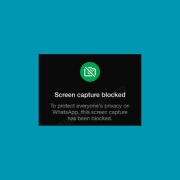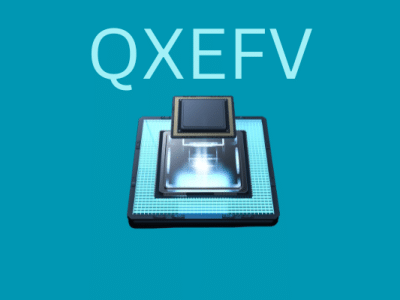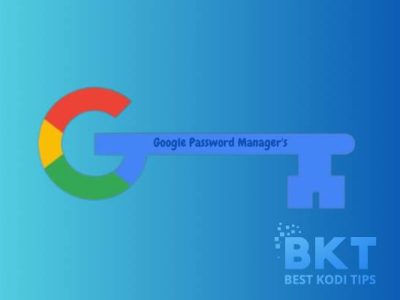QR codes have become increasingly popular in our digital age as a convenient tool for transferring information and enabling quick access to websites, applications, and multimedia content. However, ExpressVPN’s blog piece has shown that with their rising popularity, the potential for misuse and the emergence of malicious QR codes has also become a concern. Understanding the difference between malicious and legitimate QR codes is crucial in safeguarding ourselves against potential threats. This article will delve into the characteristics that set them apart and explore how to identify and protect against malicious QR codes.
Understanding QR Codes:
QR codes, short for Quick Response codes, are two-dimensional barcodes that can be scanned using a smartphone or QR code reader. These codes contain encoded information, such as URLs, text, contact details, or other data, which can be quickly accessed by scanning the code with a compatible device.
Legitimate QR Codes:
Legitimate QR codes are generated by reputable sources, including businesses, organizations, and individuals, to enhance user experiences, facilitate transactions, and provide valuable information. These codes are generated using reliable QR code generator tools, ensuring their authenticity and effectiveness in enhancing user convenience and accessibility. They are typically used in various contexts, such as marketing campaigns, ticketing, payments, and product packaging. Legitimate QR codes are generally safe to scan and are designed to enhance user convenience and accessibility.
Characteristics of Legitimate QR Codes:
Verifiable Sources: Legitimate QR codes are often sourced from reliable entities, such as known brands, government agencies, or reputable websites. They are typically associated with trusted organizations or individuals, ensuring the authenticity and reliability of the information they provide.
Purposeful Content: Legitimate QR codes are intended to provide value to the users. They may redirect users to websites, initiate payments, offer discounts, display contact information, or provide additional product details. The content of legitimate QR codes aligns with the context in which they are used.
Clear Context: Legitimate QR codes are usually placed in appropriate locations and contexts. For example, a QR code on a product packaging may lead to a website with detailed instructions, while a QR code on a poster may provide access to event information or exclusive content.
Malicious QR Codes: On the other hand, malicious QR codes are designed to deceive or harm users, often leading to unintended consequences. Cybercriminals can generate these codes to spread malware, phish personal information, or conduct fraudulent activities. It is vital to be careful while scanning Quick-Response codes from unknown sources or suspicious contexts.
Characteristics of Malicious QR Codes:
Unverified or Unknown Sources: Malicious QR codes are commonly associated with unverified or unknown sources. They may appear in unsolicited emails, suspicious websites, or counterfeit products. Scanning such QR codes can lead to compromised security or privacy breaches.
Unexpected Actions: Malicious QR codes may redirect users to websites that mimic legitimate platforms, tricking users into providing sensitive information such as passwords, credit card details, or personal data. They may also prompt users to download malicious software or execute harmful commands on their devices.
Unusual Context: Malicious QR codes may appear in unexpected contexts or locations, such as stickers placed over legitimate QR codes, compromising the user’s trust and leading to malicious actions or compromised security.
To protect yourself from the potential risks associated with malicious QR codes, follow these best practices:
Verify the Source:
Scan QR codes from trusted sources, such as official websites, reputable apps, or verified social media accounts. Be cautious when scanning QR codes from unfamiliar or suspicious sources.
Be Wary of Unsolicited QR Codes:
Exercise caution when scanning QR codes received via email, text, or social media, especially if they are unsolicited or come from unknown senders.
Inspect the URL Before Scanning:
Before scanning a QR code, please take a moment to inspect the URL it intends to redirect you to. Hover over the URL or long-press it to reveal the full address. Ensure that the URL matches the context and purpose of the QR code. If it appears suspicious or differs from what you expected, refrains from scanning it.
Use QR Code Scanners with Built-in Security:
Opt for reputable QR code scanning apps or built-in smartphone features that prioritize security. These applications often have mechanisms to detect and alert users of potential risks associated with malicious QR codes. Regularly update your scanning app to ensure you have the latest security measures.
Beware of QR Code Overlay Attacks:
Cybercriminals may attempt to place stickers or overlays containing malicious QR codes over legitimate codes in public spaces. Exercise caution when scanning QR codes from such sources. It is best to avoid scanning the code if you notice anything unusual or suspect tampering.
Conclusion:
QR codes offer a convenient way to access information and enhance user experiences in various contexts. While trusted sources generate legitimate QR codes to provide value, malicious QR codes pose potential risks, including malware, phishing attacks, and fraud. To protect yourself, it is essential to verify the source, be cautious with unsolicited QR codes, inspect URLs before scanning, use secure scanning apps, watch out for overlay attacks, keep your device and software up to date, be mindful of sharing personal information, and stay informed about QR code security best practices. By exercising vigilance and following these guidelines, you can enjoy the benefits of QR codes while minimizing the potential risks associated with malicious intent.















Comments